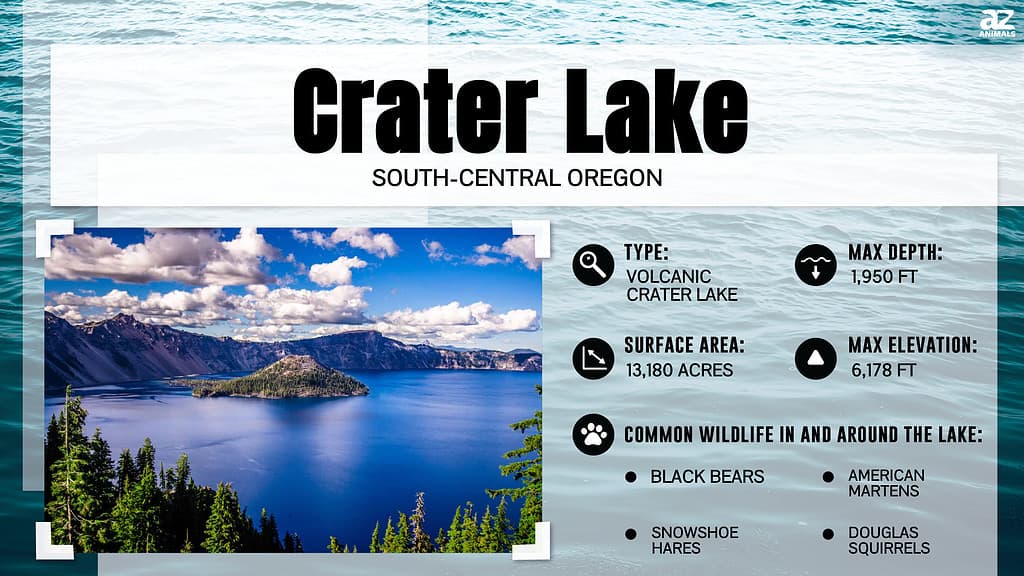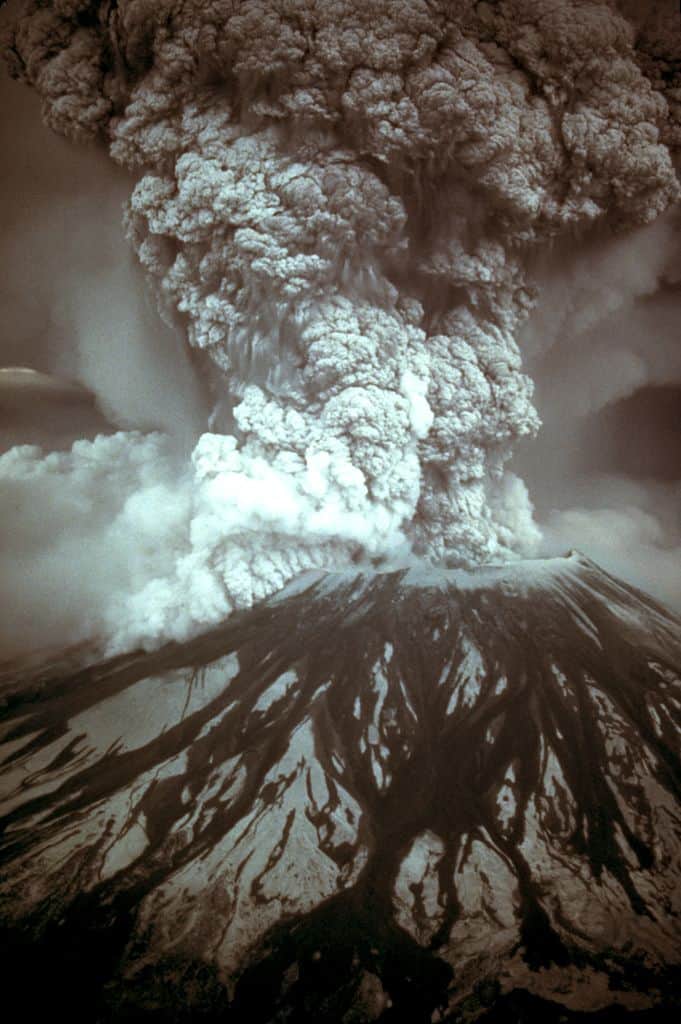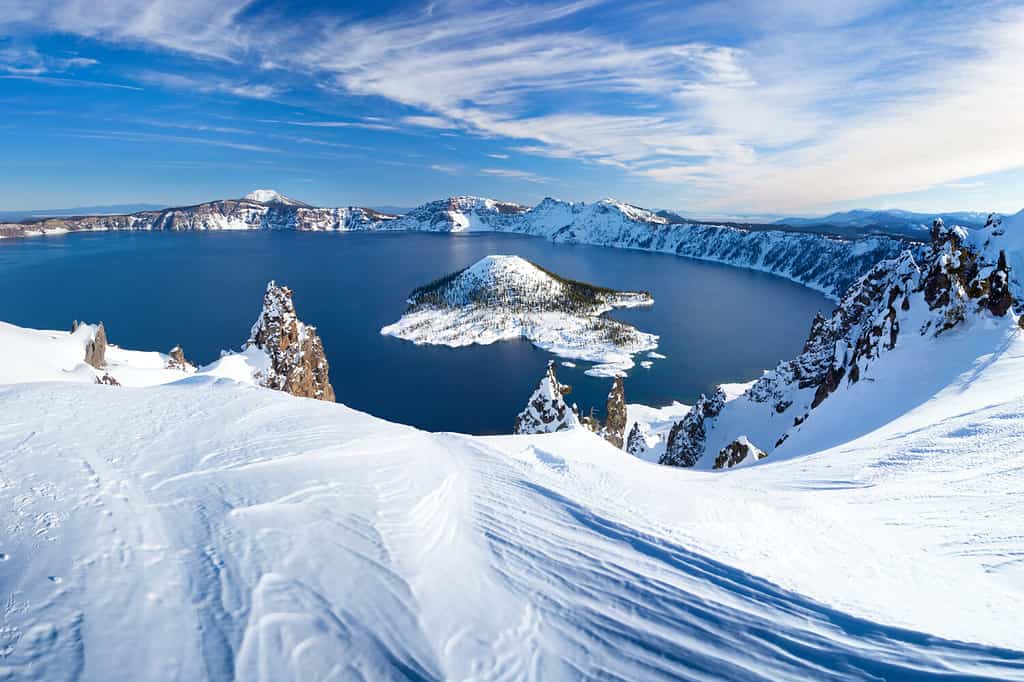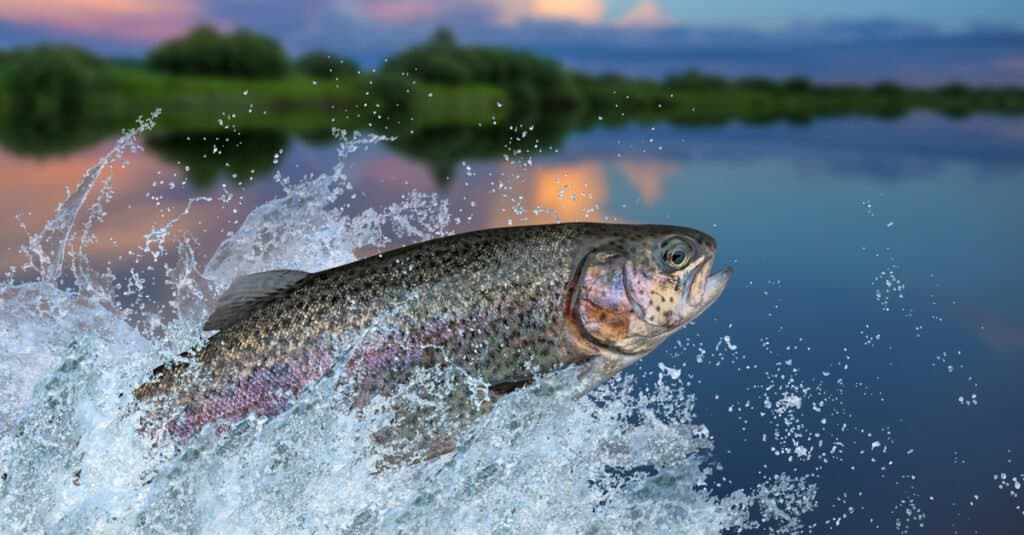Crater Lake, Oregon, at nearly 2,000 feet deep, is the deepest lake in the United States. It’s also a scenic and popular vacation spot. But when did Crater Lake form, and how? In this article, we’ll share the origins of this national treasure, along with the ecological diversity of the area. We’ll also cover the recreational opportunities you and your family can explore at Crater Lake National Park.
Did a Meteorite Form Crater Lake?

One look at Crater Lake in the Cascade Mountains of Southern Oregon, and it’s clear how it got its name. It’s roughly circular, five miles across, and rimmed by rock walls towering 2,000 feet above the surface of the water. And you’d have to dive down another 2,000 feet to get to the bottom of all that water. In the center is Wizard’s Island, a landmass that completes the impression of a crater with a central peak. This is reminiscent of photos of the moon. So, is Crater Lake what remains of an ancient meteorite impact? Not quite . . .
An Apocalyptic Supervolcano

Crater Lake in Oregon is the deepest lake in the United States.
©Wollertz/Shutterstock.com
A volcano caused Crater Lake, not a meteorite. Geologists say that here, Mount Mazama towered 12,000 feet high as a supervolcano in the Cascade Range. However, 7,700 years ago, the mountain explosively erupted. The force was 40 times greater than the 1980 Mount St. Helens eruption. Ash blanketed an enormous area, including most of the states of Washington, Oregon, and Idaho. It also drifted to parts of neighboring states and Canada. After this cataclysm, the volcano collapsed in on itself forming a caldera. This cooled and filled with water, forming the lake we know today. The volcano continued to spew lava under the rising water to create four volcanic peaks in the caldera. Only one rose above the water level: Wizard Island. With its 767 feet above the water line, it has its own crater, 90 feet across and 90 feet deep. The volcano has been dormant now for the past 5,000 years or so.

The eruption of Mount St. Helens was 40 times smaller than that of Mount Mazama.
©Austin Post / This image is in the public domain in the United States because it only contains materials that originally came from the United States Geological Survey, an agency of the United States Department of the Interior.
The Water of Crater Lake
Crater Lake’s water supply is entirely rain and snow, with about 43 feet of snow every year! With no rivers flowing in and bringing sediment, the water is crystal clear. It is also a brilliant shade of blue due to the way the light reflects back from the depths. Water leaves the lake only through evaporation and underground seepage, keeping it at a fairly constant level. That seepage occurs at a rate of about two million gallons of water an hour. No one really knows where it ends up. Researchers have not been able to find any springs or streams that account for this water flow! Maybe it’s accumulating down in the Earth’s crust somewhere.

Crater Lake is filled by rainfall and an astounding 43 feet of snow a year!
©Matthew Connolly/Shutterstock.com
Life in the Lake
Six species of fish were introduced to Crater Lake between 1888 and 1941. Today, only two of these species survive: rainbow trout and kokanee salmon. They number about 60,000 altogether. Fishing for them is allowed, but only with artificial bait to head off the risk of introducing another invasive species. Crayfish are another non-native species that was introduced in 1915. Unfortunately, it became a threat to the native Mazama newt, found only in Crater Lake. It is possible the newts will go extinct if conservationists don’t find a way to control the crayfish population. There are about 165 species of plankton in the lake. Native mosses cover the rims of the lake at a depth of 100-400 feet.

Rainbow trout are one of two non-native fish species that have multiplied in Crater Lake.
©FedBul/Shutterstock.com
Forest Ecosystems Around Crater Lake
Crater Lake National Park includes some 180,000 acres of dense mountainous forest. Four of the main forest species found at different altitudes of the mountains are the ponderosa pine, lodgepole pine, mountain hemlock, and whitebark pine. These trees provide shelter for large numbers of birds and mammals. Visitors frequently see deer and squirrels, but those with patience and a sharp eye might also be able to spot elk, bears, bobcats, coyotes, porcupines, snakes, and amphibians.

A sharp-eyed visitor may spot elk in the park surrounding Crater Lake.
©Roy Nelson/Shutterstock.com
What Can You Do at Crater Lake National Park?
If you’d like to visit Crater Lake yourself, there are a lot of ways to enjoy the Crater Lake National Park and bring back great pictures and memories. Visitors that aren’t outdoor savvy can drive the 33-mile Rim Road around the lake, with 30 designated scenic overlooks where you can pull over and drink in the view. If you grow tired of looking at a gorgeous jewel-like lake, several unusual geological features will keep you interested. Two days out of the year the road closes to cars, but you can bike around it. Only well-trained cyclist should attempt to make it all the way around, as some portions can be steep.
Fishing and swimming are allowed, but the water is so cold you probably will not want to say in for long. Sunrises and sunsets are spectacular there, and if you stay past dark, you’ll be astounded at how many stars you can see in the pitch-dark sky. And don’t think you have to limit your visit to spring, summer, and fall. Wintertime opens a whole new range of possibilities: winter camping, cross-country skiing, ranger-guided walks, snowboarding, sledding, downhill skiing, and snowmobiling. The only question now is not whether you’ll visit Crater Lake, but when.
The photo featured at the top of this post is © iStock.com/Photographer and videographer from Ukraine
Thank you for reading! Have some feedback for us? Contact the AZ Animals editorial team.






